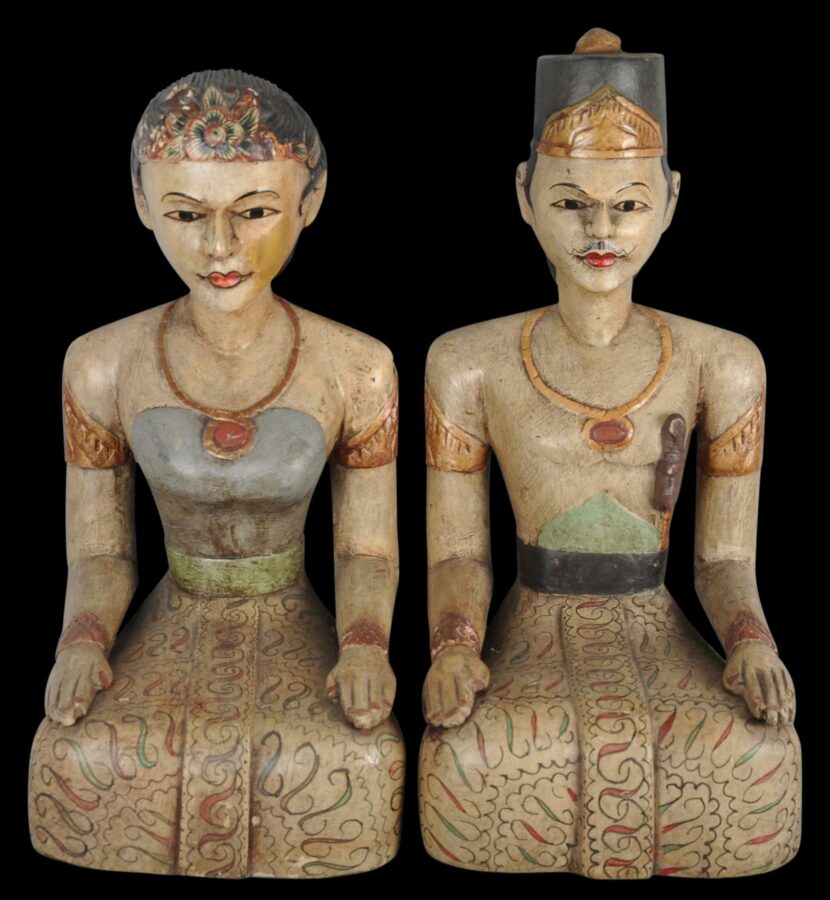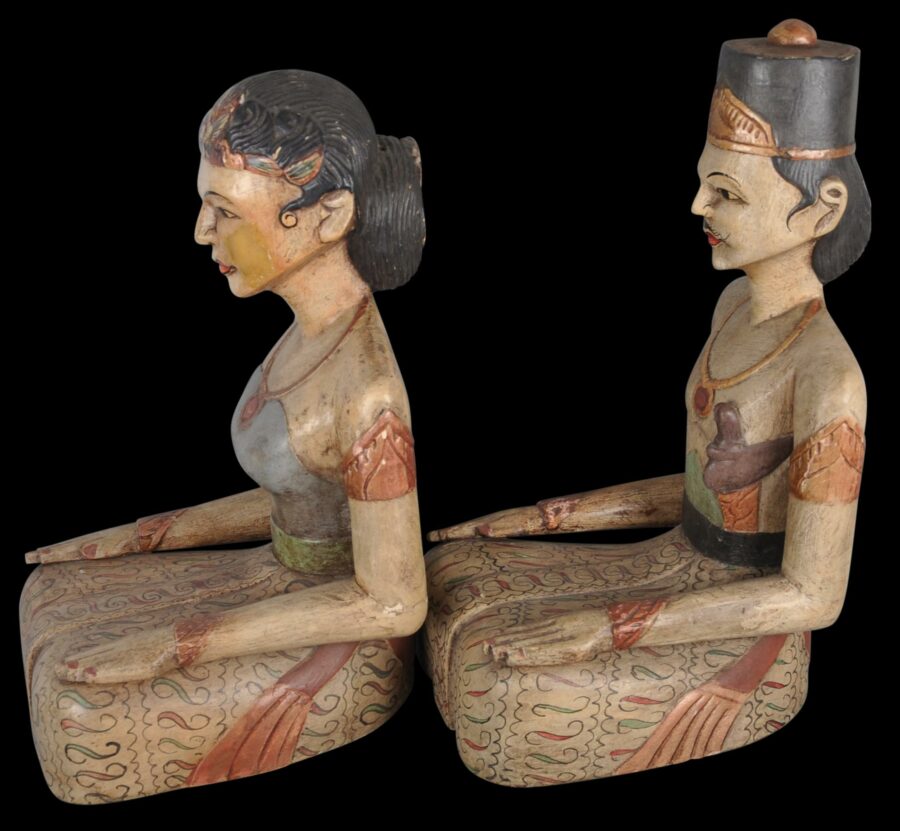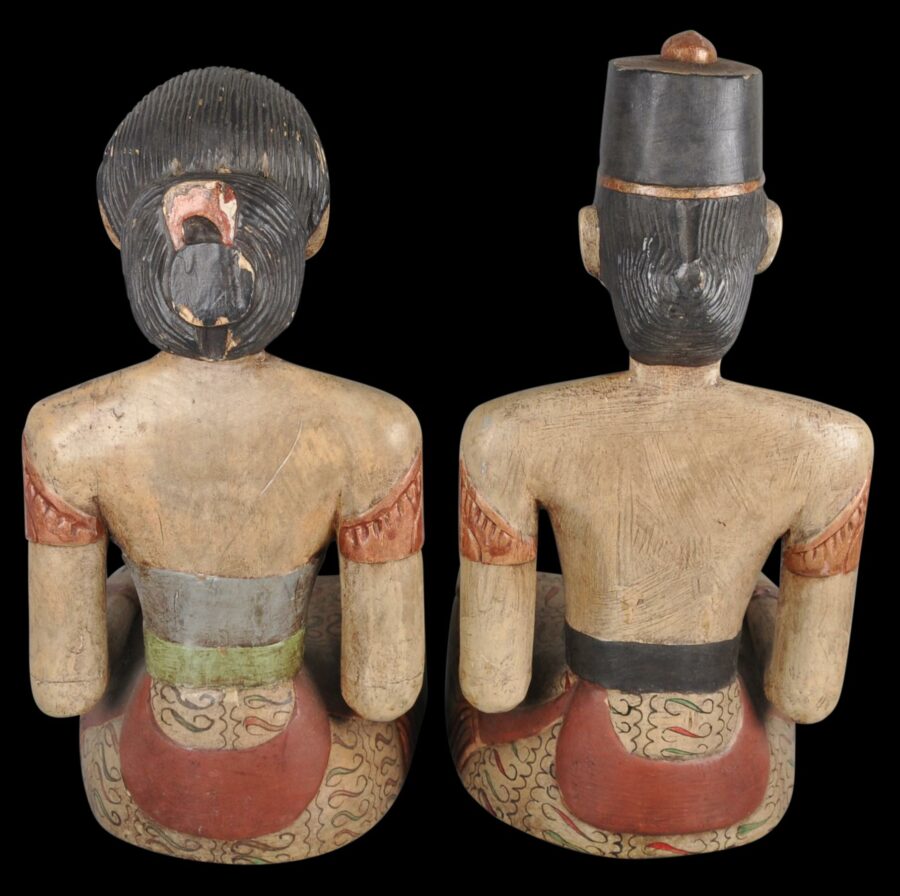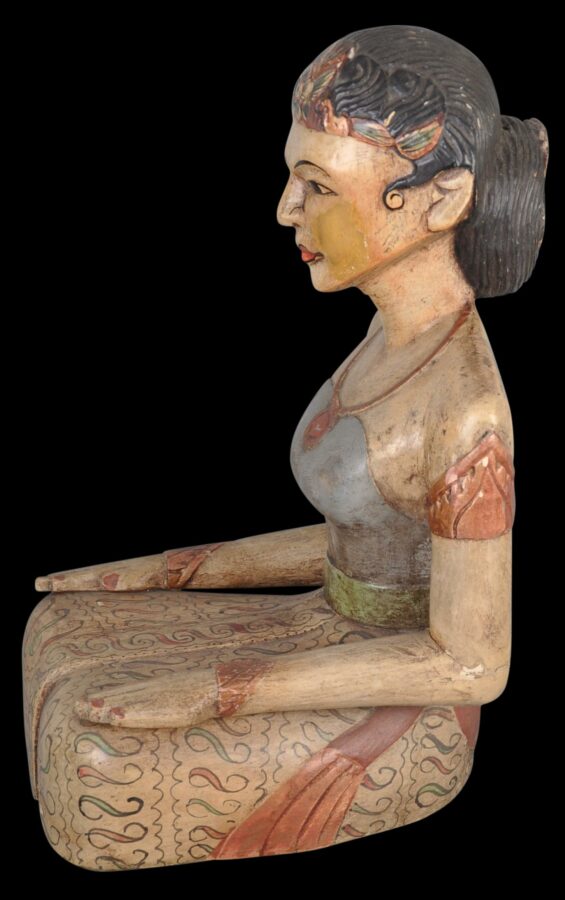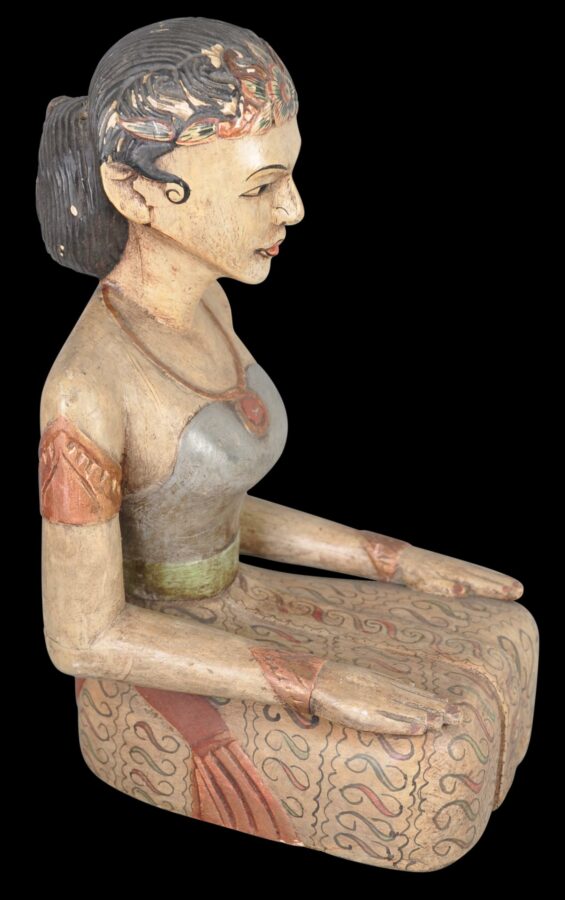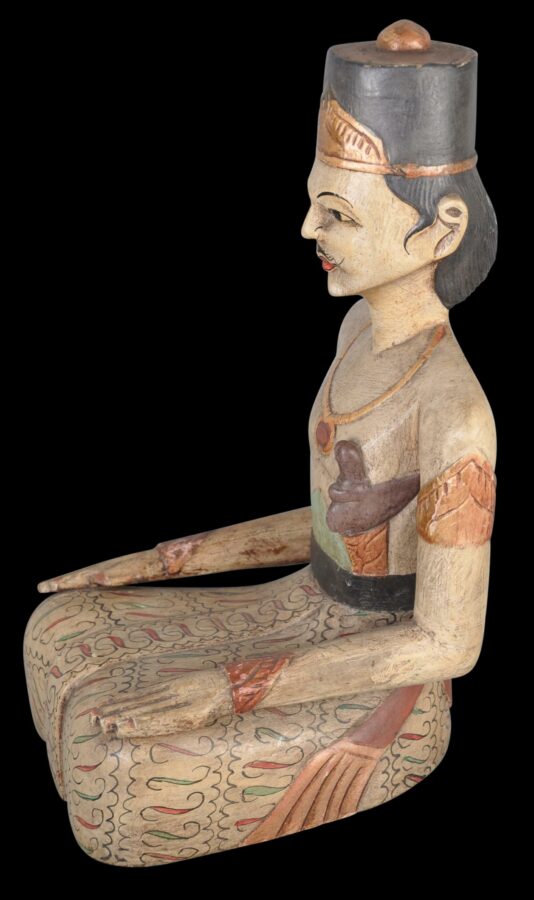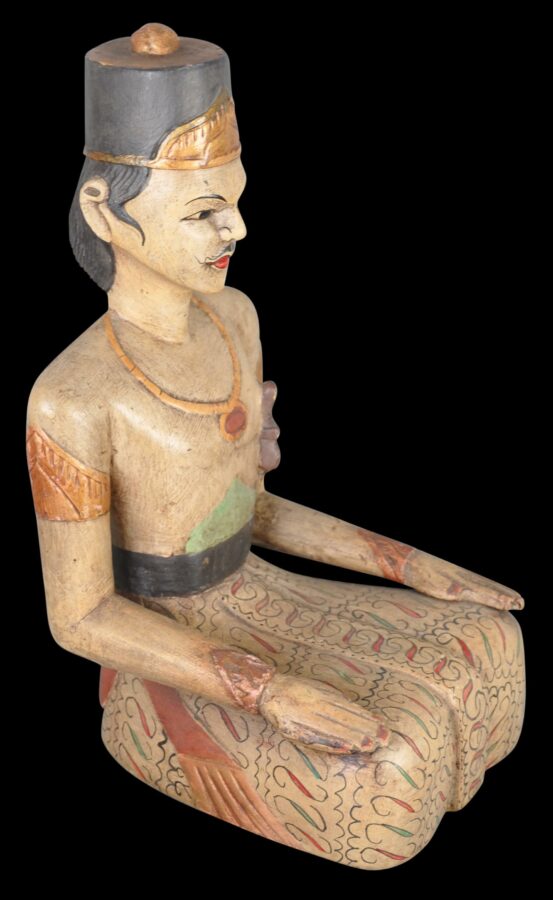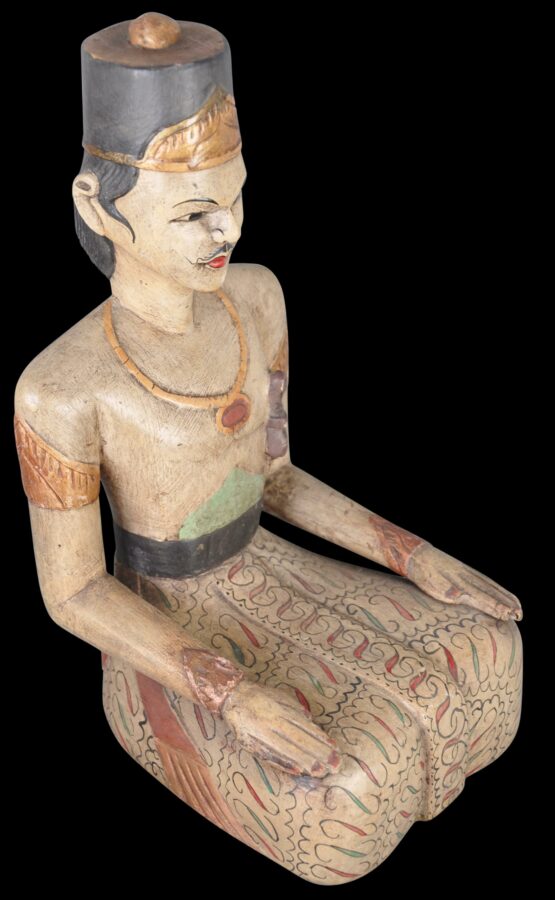Pair of Central Javanese, Courtly Wedding Loro Blonyo Figures
Central Java, Indonesia
19th century
height: 24.4 and 25.7 cm, combined weight: 819g
Provenance
UK art market
This fine pair of loro blonyo figures are of polychromed, carved light wood.). Such figures were used in central Javanese wedding ceremonies.
They represent Dewi Sri, the rice harvest goddess, and her consort Sadono. Dewi Sri is a deity associated with fertility and prosperity with her connections to rice and rice harvest. The figures hark back to pre-Islamic culture on Java and later were incorporated into the syncretic ritual practices of the Javanese.
Traditionally, the figures were placed at the base of the canopied wedding bed (krobongan) to promote a prosperous marriage. This practice was initially restricted to royal and aristocratic families but the custom later spread to other societal groups. (The dress of the two figures is based on the courtly wedding costumes of the kraton (palace) of the royal court of Yogyakarta.)
Once, the wedding ceremony had taken place, the figures were removed and replaced by the bride and groom themselves.
Both figures are shown kneeling and wear batik sarongs with typically central Javanese designs. Sadono wears the traditional Javanese cloth hat known as a blangkon, pulled tightly over his head.
Both figures have been carved with slightly elongated arms, waists and fingers, reminiscent of the wayang puppets used on Java.
Sadono has a very fine, elegant moustache, and both have pleasing curls on each side of their faces.
Both figures also have blank, almost expressionless countenances on their faces – the look of cultivated indifference that is a mark of the central Javanese aristocracy. (Any other look suggesting excitement or even interest in worldly affairs was seen as low class and suggestive of a need to be concerned with the sorts of daily matters that concerned ordinary folk, such as the need to earn a living.)
Examples of loro blonyo are illustrated in Tanudirjo (2017, p. 112), Richter (1993, p. 56), and Fischer (1994, p. 15).
Both figures are in a fine and stable condition. The paint used to decorate them is original and has developed a pleasing softness. crazing. They are highly sculptural and decorative.
References
Carpenter, B., Javanese Antique Furniture and Folk Art: The David B. Smith and James Tirtoprodjo Collections, EDM, 2009.
Fischer, J., The Folk Art of Java, Oxford University Press, 1994.
Richter, A., Arts and Crafts of Indonesia, Thames & Hudson, 1993.
Tanudirjo, D.A., et al, Ancestors and Rituals, Snoeck, 2017.


